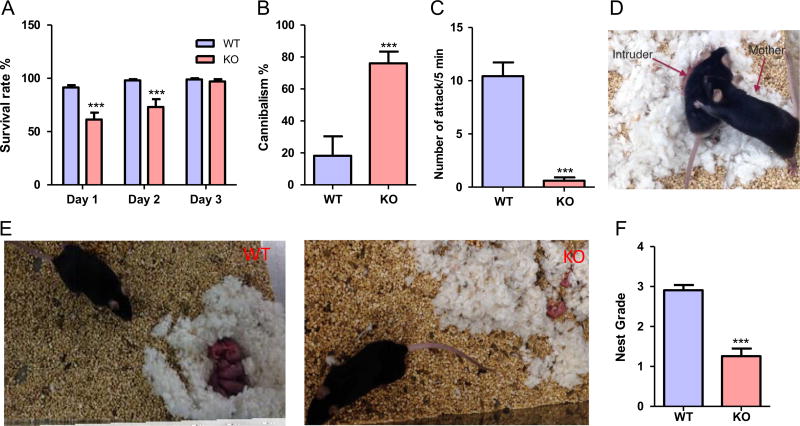Figure 2.
MCHR1 ablation affects several aspects of maternal behaviors. (A) Survival rates in the progeny of WT and MCHR1 KO mice (n = 19–22). Two way ANOVA followed by Bonferroni post-hoc test (F1,111 = 27.83, P < 0.001): WT vs. KO, PPD1: ***P < 0.001, PPD2: ***P < 0.001, PPD3: P > 0.05. (B) Cannibalism rates in the progeny of WT and MCHR1 KO mice as a percentage of the mortalities (n = 19–22). Unpaired t-test (t = 4.3): WT vs. KO, ***P < 0.001. (C) Number of attacks by WT and MCHR1 KO females of male intruder mice (n = 23). Unpaired t-test (t = 7.4): WT vs. KO, ***P < 0.001. (D) Representative graph of maternal aggression in the WT female mice on PPD7. (E) Representative graph of the nest build by WT (left panel) and MCHR1 KO (right panel) mice. (F) The score of the nesting quality of WT and MCHR1 KO mice (n = 22–24). Unpaired t-test (t = 6.8): WT vs. KO, ***P < 0.001.

